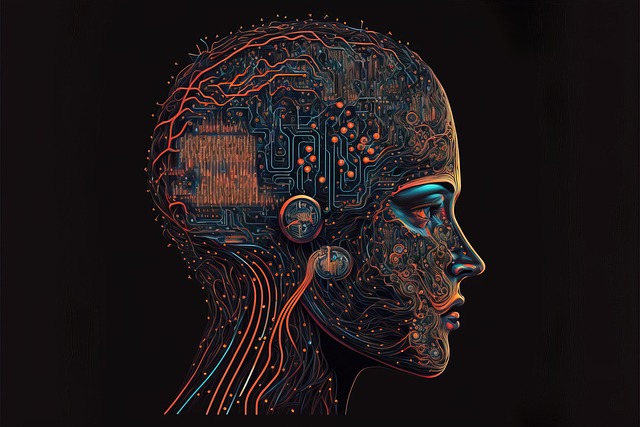Remember when talking to your phone felt awkward? When you’d glance around before asking Siri a question in public, hoping nobody was watching? That embarrassment has quietly disappeared, and something far more significant has taken its place.
Voice AI isn’t just getting better at understanding us anymore. It’s actively reshaping how businesses operate, how customers get served, and how we interact with technology when nobody’s watching. The transformation happened so gradually that most of us missed it, but by 2025, voice technology has become the invisible backbone of operations we interact with every single day.
The Fidelity Problem Is Finally Solved
For years, the biggest complaint about voice AI was simple: it just didn’t sound right. Conversations felt robotic, with awkward pauses and that telltale synthetic quality that immediately flagged you were talking to a machine. The technology could transcribe speech reasonably well, but generating natural responses? That was another story.
That gap has essentially closed. The latest voice models don’t just understand context better—they replicate human speech patterns with unsettling accuracy. We’re talking about systems that know when to interrupt politely, when to insert a thoughtful pause, and how to modulate tone based on conversational context.
What changed? The training data got exponentially better, for one. These systems have now absorbed millions of hours of real human conversations across dozens of languages and contexts. But more importantly, the underlying models learned to predict not just what words come next, but how those words should be delivered emotionally and rhythmically.
Try calling your bank or insurance company lately. Chances are decent you’ve already talked to one of these new-generation voice agents without realizing it. That’s not a failure of the technology—that’s the entire point.
Enterprise Adoption Accelerates Past Consumer Use
Here’s where things get interesting. While consumer applications like voice assistants on phones plateau, enterprise adoption has exploded. Companies that were cautiously testing voice AI in 2023 are now deploying it across entire departments in 2025.
The economics make too much sense to ignore. A single voice AI agent can handle thousands of simultaneous conversations. It never calls in sick, never needs training updates beyond software patches, and maintains perfect consistency in how it represents your brand. For businesses operating on thin margins, the math is compelling.
But this isn’t just about cost cutting. The best implementations genuinely improve customer experience. Instead of navigating phone trees for ten minutes, customers now have natural conversations that route them correctly the first time. Problems get solved faster. Information gets communicated more clearly.
Insurance claims processing is a perfect example. What used to require multiple phone calls, physical paperwork, and weeks of waiting now happens through a guided voice conversation that collects all necessary information, verifies details, and initiates processing in one go. The AI asks clarifying questions when needed, confirms understanding, and provides realistic timelines.
The Healthcare Quiet Revolution
Healthcare has become an unexpected hotspot for voice AI deployment, and it’s solving problems most patients didn’t even realize were slowing down their care.
Medical documentation consumes an absurd amount of physician time. Doctors spend hours after appointments typing notes, updating records, and ensuring everything is coded properly for insurance. Voice AI now sits in the room during appointments, listening to conversations and automatically generating clinical notes, treatment plans, and billing codes.
Physicians initially resisted this—understandably so. The idea of an AI listening to private medical conversations felt invasive. But the technology proved itself by being genuinely helpful rather than disruptive. It doesn’t interrupt. It doesn’t require the doctor to speak unnaturally or use specific command phrases. It just listens, understands, and documents.
The time savings translate directly to patient care. Doctors who previously saw 15 patients daily can now comfortably see 18 or 20 without working longer hours. That increased throughput helps address the physician shortage many regions face.
Telemedicine has similarly transformed. Voice AI now handles preliminary screenings, collects symptoms, and even provides basic triage before a human doctor joins. For routine concerns like medication refills or test result discussions, patients might never speak to a human at all—and many prefer it that way. No judgment, no rushed feeling, just clear information exchange.
The Death of Phone Trees (Finally)
If there’s one consumer-facing change people notice, it’s this: those infuriating “Press 1 for sales, Press 2 for support” phone systems are dying.
They’re being replaced with conversational interfaces that just work. You call a company, immediately explain your problem in natural language, and get routed appropriately. The AI asks follow-up questions if needed, verifies your account through voice biometrics, and either solves your problem directly or connects you to the right human specialist with full context already loaded.
Retail companies were early adopters here. Handling returns, tracking shipments, updating payment methods—these transactions are straightforward enough that voice AI handles them completely. The systems know when they’re out of their depth and smoothly transition to human agents for complex situations.
What’s remarkable is how these systems remember context across calls. Call back three days later about the same issue, and the AI recalls your previous conversation, acknowledges where things were left, and picks up from there. It feels like talking to a helpful person who actually pays attention, because in a sense, you are.
Real-Time Translation Breaks Language Barriers
One of voice AI’s most quietly powerful capabilities is real-time translation, and it’s finally working well enough for serious business use.
Companies with international operations no longer need translators for routine communications. Customer service agents in Chicago seamlessly help customers in Tokyo, with the AI translating both directions with minimal latency. Both parties speak their native languages, and the technology handles the rest.
The quality isn’t quite perfect yet—idioms and cultural context still occasionally get mangled—but it’s good enough for transactional conversations. And it’s improving rapidly. These systems learn from corrections and cultural context, getting better at preserving meaning across languages over time.
This capability is democratizing global commerce for smaller businesses. A boutique seller in Italy can now serve customers worldwide without hiring multilingual staff or expensive translation services. The barrier to international expansion just dropped dramatically.
Security and Authentication Through Voice
Banks and financial services discovered that voice biometrics are remarkably secure. Your voiceprint is nearly as unique as your fingerprint, and much harder to fake convincingly.
Authentication now happens invisibly during conversation. You call your bank, start talking about your issue, and the system verifies your identity through how you sound rather than demanding mother’s maiden names or account numbers. It’s faster, more secure, and significantly better user experience.
This technology extends beyond banking. Healthcare providers use it to ensure they’re discussing protected health information with the actual patient. Government agencies use it for identity verification. Even some residential buildings have implemented voice-authenticated entry systems.
The privacy implications do raise eyebrows, and rightfully so. These systems are storing and analyzing biometric data. Regulation is still catching up to deployment, though GDPR in Europe and various state privacy laws in the US are forcing companies to handle voice data more carefully.
Where Humans Still Matter (For Now)
Despite all this automation, certain conversations remain firmly in human territory. Complex negotiations, emotionally sensitive situations, creative problem-solving—these still need human judgment and empathy.
The best implementations recognize this and design for hybrid interactions. AI handles routine aspects quickly and efficiently, then seamlessly transfers to humans when needed. The human agent gets full context from the AI conversation, so customers never repeat themselves.
Sales is instructive here. Voice AI can qualify leads, answer basic questions, and schedule meetings—but closing complex B2B deals still requires human relationship building. The technology augments salespeople rather than replacing them, handling administrative busywork so humans focus on high-value interactions.
The 2025 Reality Check
We’re not in a science fiction future where AI has replaced human interaction. What we have is subtler and arguably more impactful: AI handling an enormous volume of routine interactions competently enough that humans never need to be involved.
Most people haven’t noticed because good voice AI is designed to be invisible. It solves problems efficiently without drawing attention to itself. The technology succeeds when users focus on getting their issue resolved rather than marveling at the AI.
Enterprise adoption will continue accelerating. The business case is too strong, and the technology is past the reliability threshold where deployment risk is acceptable. Industries that haven’t yet automated—legal services, hospitality, logistics—will follow the same path we’ve seen in customer service and healthcare.
The conversation about job displacement is valid but more nuanced than headlines suggest. Voice AI eliminates some roles, creates new ones (someone has to design, train, and maintain these systems), and transforms others. Customer service representatives increasingly handle only complex issues, requiring deeper expertise and better compensation.
What Comes Next
Looking ahead, voice AI development focuses on three areas: emotional intelligence, complex reasoning, and personalization.
Emotional intelligence means detecting frustration, confusion, or satisfaction in someone’s voice and adjusting responses accordingly. Early implementations already attempt this, but there’s substantial room for improvement.
Complex reasoning involves handling multi-step problems that require understanding context, making inferences, and planning solutions. Current systems handle these situations crudely at best.
Personalization is about remembering individual preferences and communication styles across interactions. Some companies are testing this, though privacy concerns limit how far they can push.
The technology’s trajectory is clear: more capable, more ubiquitous, more seamlessly integrated into daily operations. Whether that’s exciting or concerning depends largely on whether we’re deliberately steering this development toward human benefit or just chasing efficiency metrics.
Insights
Voice AI stopped being a futuristic novelty somewhere in the past few years. It’s now infrastructure—invisible, reliable, and essential to how modern businesses operate.
You’re probably interacting with it regularly without thinking about it. That’s by design. The quiet takeover isn’t happening through flashy announcements or dramatic demonstrations. It’s happening through countless small interactions that work slightly better than they used to, accumulating into a fundamentally different technological landscape.
The revolution wasn’t televised because revolutions rarely are when they’re happening. We only notice afterward, when the new normal feels so natural we can barely remember what came before.
That’s where we are with voice AI in 2025. Not in a science fiction future, but in a present that would have seemed impossible just a few years ago—and feels completely ordinary today.



